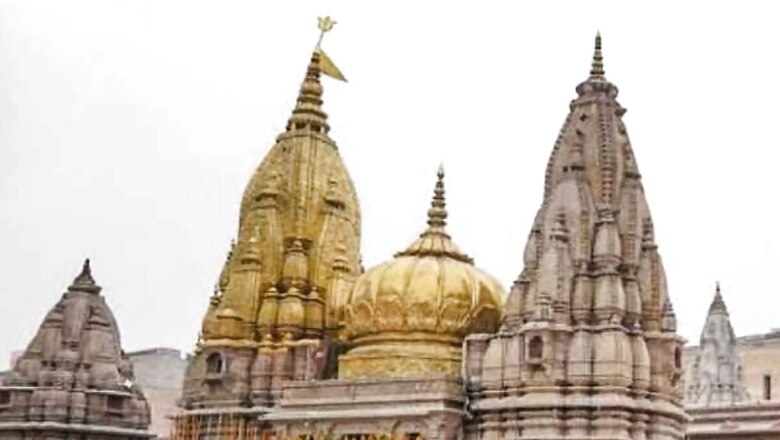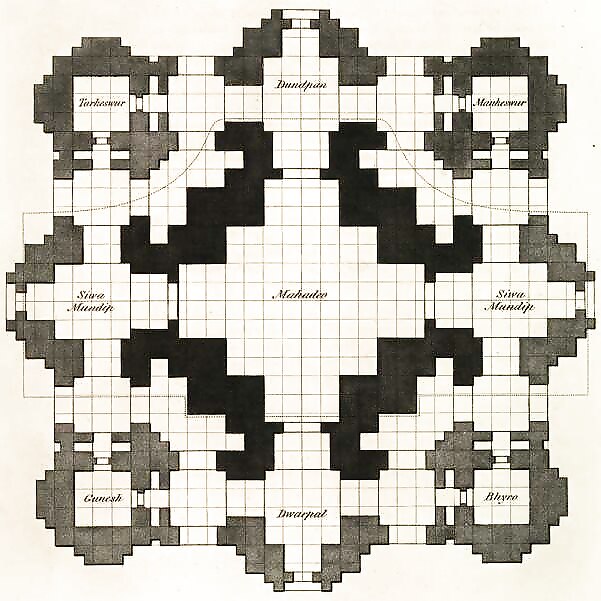
views
Lord Shiva is considered the guardian deity of Kashi/Banaras/Varanasi, who is present in all his forms across the city. From the ecumenical perspective, Kashi is viewed as lying on the trishula of Shiva in his own cosmic realm, and the city that we see with our mortal eyes is actually the shadow of that cosmic Kashi. In the Puranic literature, Kashi is the first city after the great cosmic destruction (mahapralaya), and it is the place where Shiva eternally resides.
For almost 1,000 years, Viswanath (also known as Vishweshwar) has been considered the most important Shiva linga in Kashi. Viswanath or the “Lord of Everything (viswa+nath)”, a jyotirlinga, is one of the most eminent Shiva lingas in entire India and serves as the namesake for many temples across the country, which the locals refer to as Kashi Vishwanath temple. Despite its importance, the temple of Kashi Vishwanath does not have the antiquity or the beauty of the classical Indian medieval temples. This is because the current temple was built as late as in 18th century by Rani Ahalyabai Holkar of Indore.
The history of the Kashi Vishwanath temple is filled with tales of repeated destruction by Islamic invaders/rulers and rebuilding of the temple by the Hindus until finally Aurangzeb destroyed it in 1669. It was more than a century later in 1777 that Rani Ahilyabai built the current temple.
A look at the history of destruction of the Vishwanath temple
Vishwanath temple of Kashi has faced destruction multiple times. The first attack was in 1194 CE by Muhammed Ghori’s general-in-charge of north Indian territories, Qutb-ud-din Aibak, who destroyed the temple. Rebuilding the temple on the same site was not possible because a mosque was constructed there by Razia Sultan of the Delhi-based Mamluk/Slave dynasty during her short reign (1236-40 CE), which is known as Bibi Razia’s mosque and still stands today. Situated on the hilltop (hill of Vishwanath) in central Banaras, on the highest ground, the Bibi Razia’s mosque stands on the exact site where the original 10-11th century-built Vishwanath temple stood before being destroyed in 1194 CE. Bibi Razia’s mosque, built using the destroyed temple parts, is an act of dominance that effectively announced the Islamisation of a site held especially sacred by the Hindus (Klaus Rötzer, Mosques and Tombs, 2005).
From this hilltop, one can view the Gyanvapi mosque built on the site of the second Vishwanath temple, and the golden shikhara of modern era Vishwanath temple (third site of Visweswara) built in 1777.
Around 1230 CE, the Vishwanath temple was re-built within the compound of the ancient Avimukteshvara temple, by a Gujarati merchant, which was first partially destroyed by Mahmud Hussain Shah Sharqi (king of Jaunpur, 1447-1458), and then completely by Sikandar Lodi in 1490, along with the Avimukteshvara temple. After this destruction, the Avimukteshvara temple, once among the most ancient and revered Shiva temples of Kashi, completely lost its prominence. In 1585, Narayana Bhatta, along with Raja Todar Mall, rebuilt the Vishwanath temple and followed the same cruciform plan of the original temple as described in Kashi Khand. Narayana Bhatta’s Tristhalisetu writings indicate that the Shiva linga installed in the temple by a special prayoga (procedure) was a new one.
Less than a century later, Aurangzeb destroyed the temple, despite a strong resistance by the sanyasis of the Dashanami group. The Dashanami Sadhu sect was a group of militarised sanyasis who fought for the protection of Hinduism from Islamic iconoclastic terrorism. When Aurangzeb’s troops broke the temple, the back wall was retained intentionally and made into a part of the mosque as a clear sign of Islamic supremacy. After the temple destruction, the Shiva linga was reinstalled in a corner south of the Gyanvapi well, where it was less likely to be noticed, and Hindus quietly carried on with the worship.


In 1777 CE, Rani Ahilyabai Holkar of Indore built the Vishwanath/Visveswara temple that we see now, which most likely holds the earlier Shiva linga (consecrated during Narayana Bhatta’s time in 1585). This temple is located south of the Gyanvapi masjid/mandir site, and while it lacks the grandeur of the ancient-medieval temples, the temple stands as a classic example of the 18th-century revivalist style seen in north Indian temple architecture of that era. In 1835, Maharaja Ranjit Singh offered 1000 kg gold for the plating of Visweswara mandir shikhara and its adjacent dome.
Thus, the Vishwanath/Visveswara temple is associated with three sites: Bibi Razia’s mosque, Gyanvapi Masjid complex, and the current site of the temple built by Rani Ahilyabai.
Here are important historical pointers to remember regarding the Visweswara temple:
- Bibi Razia masjid is the first and the original site of Kashi Vishwanath mandir, also known as the Visvesvara Jyotirlinga. The Razia masjid is located opposite the Carmichael Library and Gate No. 4 of the Kashi-Vishwanath corridor. A temple known as the Adi-Visvesvara temple was constructed by Maharaja Sawai Jai Singh I of Amber, right beside the Bibi Razia Mosque (with a common boundary wall) in the 17th century, to mark the original site of the Vishwanath mandir.
- The Visveswara/Vishwanath linga and the Avimukteswara linga are two different Shiva lingas, despite sharing the same temple compound once. Avimukteswara is temporally older than Visveswara, and is considered the Adi-linga. Avimuteswara is referred to as the reigning deity of Kashi in the 6th century CE text Dashakumaracharita, and is also mentioned on many seals found in the Rajght excavations, ranging from the Gupta period to 10th-11th centuries. While the Kashi Khanda states that Avimukteswara linga was established by Shiva himself before leaving for Mount Mandara during the rule of Raja Divodasa, the position of Avimukteswara temple is marked by Lingapurana (quoted by Bhatta Lakshmidhara) and is precisely where the Gyanvapi mosque sits today; the same location that was later dominated by Visveswara.
- After Razia’s mosque was built on the site of the original Visveswara temple, the same temple was rebuilt within the Avimukteswara temple complex in the 13th century. When Sikander Lodi destroyed both the Visveswara and Avimukteswara temples in 1490, the latter lost its prominence completely. While Visveswara temple was rebuilt by Narayana Bhatta, Avimukteswara was largely forgotten and it remained as an ancient stone fragment amidst the Muslim graves on the northern side of the Gyanvapi masjid, receiving flowers from devotees only during Shivratri.
- The oldest text references for Visvesvara jyotirlinga are found in Kṛtyakalpataru (1125-1145 CE) written by Gahadavala King Govindachandra’s courtier Bhatta Lakshmidhara, and in an old 12th-century text Vārāṇasīmāhātmya where the Visveswara linga is mentioned only as a passing reference. However, by the time Kashi Khanda was compiled (between the 13th -15th centuries), Visveswara linga had become the presiding deity in Kashi.
(The author is a well-known travel and heritage writer. The views expressed in the above piece are personal and solely those of the author. They do not necessarily reflect News18’s views)




















Comments
0 comment